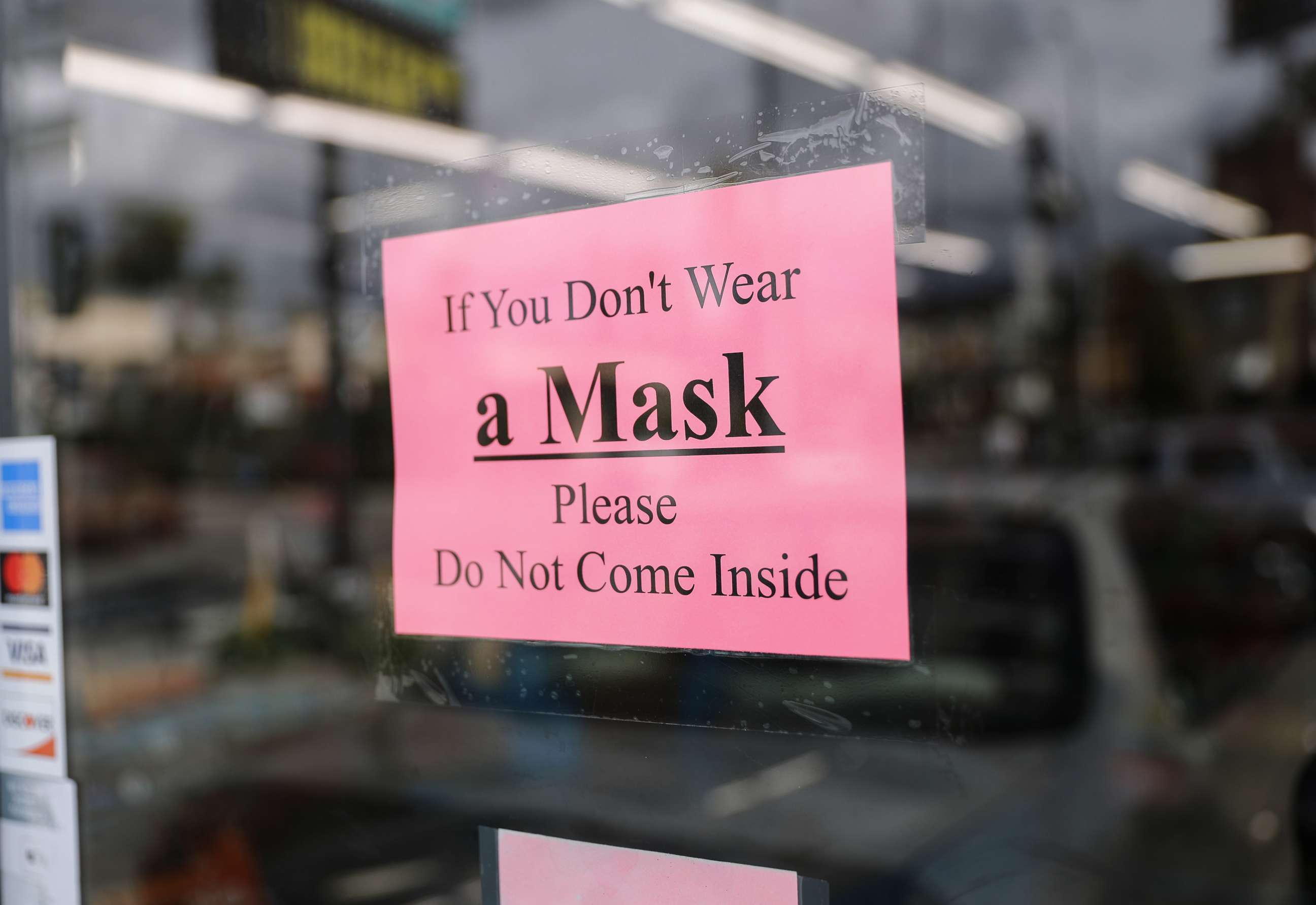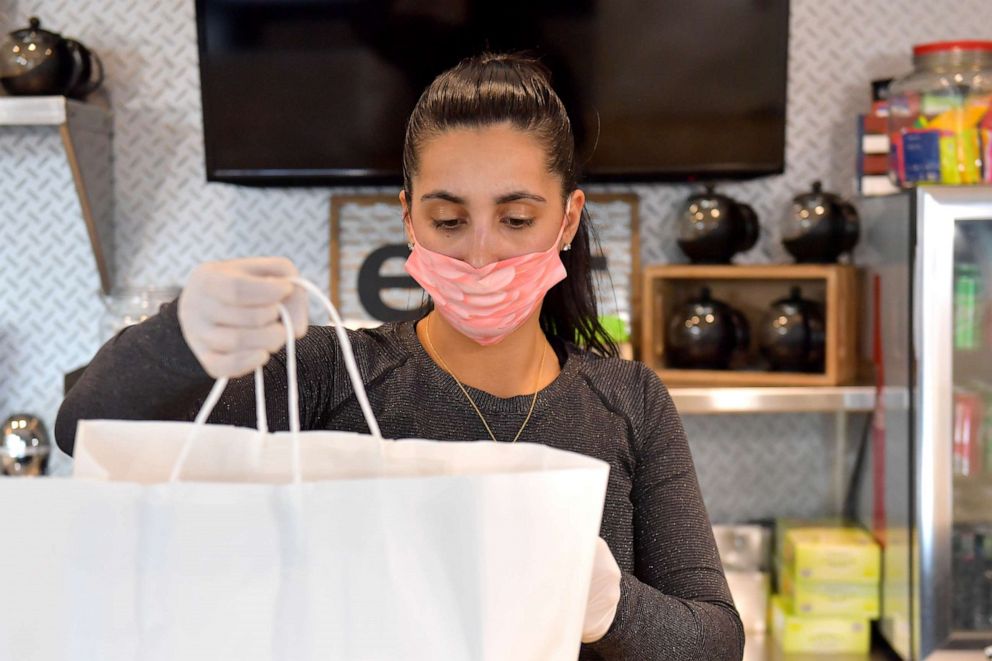From scarves to HEPA filters, what kind of face covering is your best bet against coronavirus?
What makes a better face covering to guard against COVID-19 transmission, a T-shirt or a scarf? Is it safe to use a vacuum cleaner bag? What about a coffee filter?
With U.S. government and health officials calling for the public to wear face coverings to help combat the coronavirus, the internet is abuzz with advice -- and debates -- on which approach is best.
Along with the new directives, the CDC website now features instructions for making several different homemade masks from materials including T-shirts, bandanas and coffee filters. But search online and you'll find many who say that masks made from cut-up HEPA filters -- high-efficiency particulate air filters used in vacuum cleaners, air purifiers and HVAC systems -- are even more effective.
The claim is understandable. While N95 masks used by medical professionals block 95% of particles 0.3 microns in size, HEPA filters capture 99.97% of particles that size, according to U.S. Department of Energy standards.
But not so fast: Manufacturers of HEPA vacuum bags warn against repurposing their products for use in coronavirus masks.
Shop-Vac, a leading wet/dry vacuum maker, has posted a statement on its website saying its HEPA vacuum bags "are in no way designed or intended to protect humans from bacteria, viruses or other pathogens," and cautioning that "direct contact or coverage of the human mouth or nose with the filter materials are strictly forbidden for any purpose."
Part of the reason is that most HEPA filters are composed of microscopic glass fibers, which can be harmful to the lungs if inhaled. There are vacuum bags made without glass fibers, but these are "micro-filters," not HEPA filters, which only block particles 2 microns in size.

Another type of HEPA filter made without glass fibers is the Filtrete brand filter manufactured by 3M for use in air purifiers and HVAC systems. But 3M has posted a similar warning on its website saying that Filtrete filters "are designed to be used in HVAC systems, and the filter media has not been tested to be used as a face mask for respiratory protection. Altering any of our 3M Filtrete Air Filters is not recommended."
So if HEPA filters are unsuitable for homemade masks, what materials are best?
A 2013 study by Public Health England compared nine materials for making homemade masks, including a T-shirt, a scarf, a pillowcase and a tea towel, equivalent to a dish towel in the U.S. The study considered both filtration efficiency and breathability, which is important for user comfort and safety.
The tea towel, made of strong fabric with a thick weave, had the best filtration efficiency but poor breathability. The study concluded that either a pillowcase or a 100% cotton T-shirt provided the best balance of filtration efficiency and breathability -- with the T-shirt getting higher marks because its stretchy fabric allowed a better fit.
The study also examined the effectiveness of additional layers of fabric and found that for most materials, a double layer significantly reduced breathability but was only 1-2% more effective at filtration than a single layer. More than two layers, although not tested in this study, might increase filtration efficiency but could further restrict breathing.

But before you grab that old T-shirt out of the closet, is a homemade fabric mask really that effective at blocking airborne particles? A 2008 study funded by the Netherlands Ministry of Health, Welfare, and Sports found that a homemade mask, in this case made from a tea towel, was about half as effective as a surgical mask in protecting the wearer from particles in the outside environment.
"Home-made masks ... may still confer a significant degree of protection, albeit less strong than surgical masks," the authors concluded.
While studies like these shed light on the different options for homemade masks, medical experts say that there's no one definitive answer. "These do-it-yourself face masks are an inexact science," said Dr. Tiffany Kung, a resident physician at Presbyterian/St. Luke's Hospital in Denver.
One definitive benefit of making your own mask is that it keeps surgical and N95 masks in the hands of frontline health care workers who have the greatest need for protection. For everyone else, health officials say homemade masks are an important tool to help slow the spread of COVID-19.
And whichever material you choose for your mask, it's important to remember that homemade masks are more about protecting others from you than you from others.
"A cloth face covering is not intended to protect the wearer, but it may prevent the spread of virus from the wearer to others," says the CDC. "This would be especially important if someone is infected but does not have symptoms."
Officials caution against a false sense of security, however, and remind people that wearing a mask is no substitute for essential preventive measures such as social distancing and frequent hand washing.
"We should still use them to help reduce transmission," said Dr. Kung. "But don't let the many different styles and compositions of face coverings distract us from what's even more important: We need to continue social distancing and hand hygiene. Also, don't touch your face more just because you're wearing a mask."
What to know about the coronavirus:
- How it started and how to protect yourself: Coronavirus explained
- What to do if you have symptoms: Coronavirus symptoms
- Tracking the spread in the U.S. and worldwide: Coronavirus map
Tune into ABC at 1 p.m. ET and ABC News Live at 4 p.m. ET every weekday for special coverage of the novel coronavirus with the full ABC News team, including the latest news, context and analysis.








